order
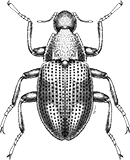
Coleoptera
“Adult Beetles”

Coleoptera
“Larval Beetles”

Diptera
“True Flies”

Ephemeroptera
“Mayflies”
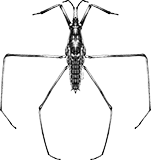
Hemiptera
“True Bugs”

Lepidoptera
“Aquatic Caterpillars, Snout Moths”

Megaloptera
“Alderflies, Dobsonflies, and Fishflies”
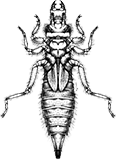
Odonata
“Dragonflies and Damselflies”
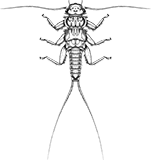
Plecoptera
“Stoneflies”
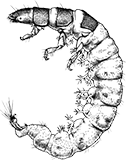
Trichoptera
“Caddisflies”
family
Leptohyphidae
genus
Tricorythodes
“Little Stout Crawler Mayflies”
Genus Overview
There are 13 North American species in this genus. Larvae and adults are small, requiring fly fishers to tie their imitations of "trichos" on small hooks (size 22–26, depending on the species). Larvae sprawl on sediments in lotic-depositional and lentic-littoral habitats, or cling to stable substrates in those habitats. They feed as collectors-gatherers of tiny fragments of organic matter, occasionally scraping algae, diatoms, and other biofilm from stable substrates.
Characteristics
POLLUTION TOLERANCE
No pollution tolerance ranges defined.
FEEDING HABITS
Collector / Gatherer
Scraper / Grazer
Scraper / Grazer
MOVEMENT
Clinger
Sprawler
Sprawler
DISTRIBUTION
Widespread (east of the Rocky Mtns.)
HABITAT
Lentic-littoral
Lotic-depositional
Lotic-depositional
Diagnostic Characters
order
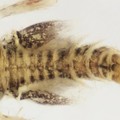
Abdominal Gills
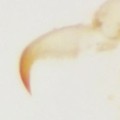
Single Tarsal Claw
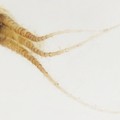
Usually 3 Tails
family
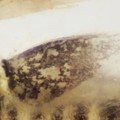
Operculate Gill On 2
+ Expanded Character List
Order:
Wings developing in wing pads. Mouthparts suitable for chewing. Gills present on tops and sides of abdomen. Segmented legs present. One tarsal claw per leg. Usually with 3 tails (sometimes 2).
Family:
The gills on abdominal segment 2 are operculate or semioperculate, roughly triangular or oval, and not touching or fusing medially. Abdominal segments 3–6 with lamelliform (plate-like) portion of gills simple or with two lobes, never with fringed margins.
Genus:
Head not wider than pronotum, without frontoclypeal or genal projections, males with small eyes. Submentum outer apical margins with long setae. Dorsal surfaces of femora without spatulate setae. Tarsal claws with many tiny teeth in one row along basal edge. Length of hind femora only about 1/2 to 3/4 the length of hind tibiae and tarsi. Hind wing pads absent. Dorsally, abdominal segments 1–6 without little spines along posterior edges.
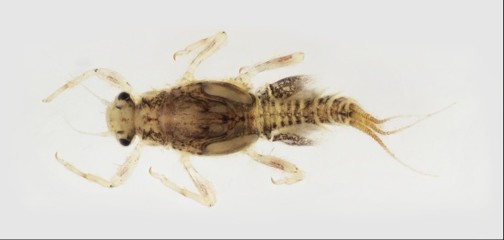
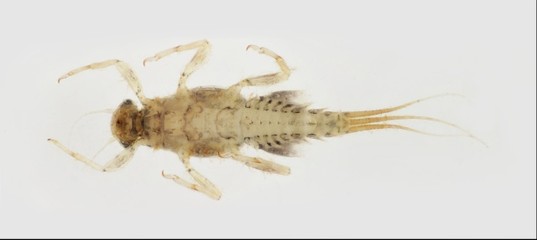
Dorsal
Ventral



